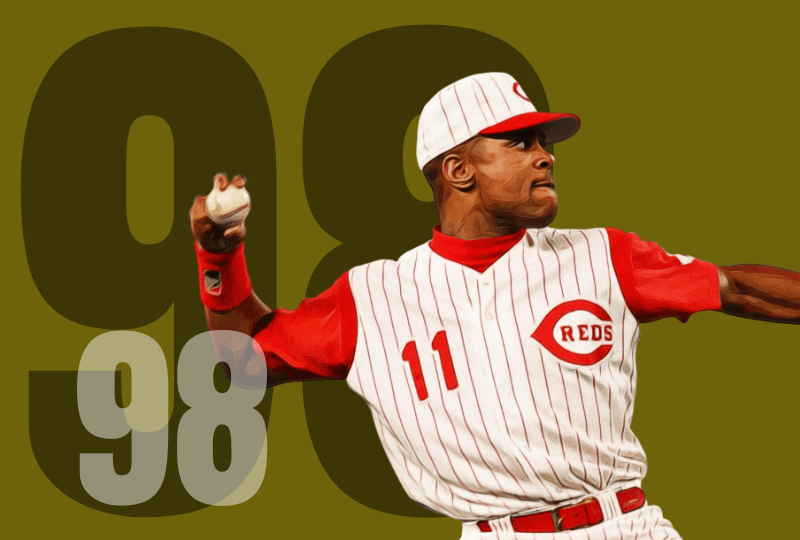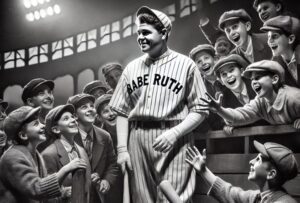Barry Larkin wanted to be a shortstop since he was a kid watching his idol Ozzie Smith on television. Growing up in the Cincinnati suburbs, he wanted to play for the Cincinnati Reds and replace Dave Concepcion at short.
“That was what I always told myself,” Larkin said early in his career. “Concepcion was near the end of a great career, and I wanted to replace him. I wanted to play as long as he did with the Reds, and I wanted to be known as the Reds best all-time shortstop.”
When he got to the Reds and replaced Concepcion, Larkin wanted uniform #1 to honor Ozzie, but the equipment guy told Barry that the team had retired that number for Fred Hutchinson. Larkin had no idea who Hutchinson was, but he asked for #11 to reinforce how much he admired Smith. Barry eventually wrestled the Gold Glove Award away from Ozzie, won an MVP award, and his number is now retired by the Reds too.
Of the great shortstops, Larkin had the best compilation of skills: he could run as fast as Eric Davis, he had the strongest shortstop arm in a generation, and only Ozzie was better with the glove. He concentrated on hitting for average and stealing bases, or he could have hit home runs. He stole 51 bases in 141 games in 1995, but he was criticized by some for not driving in enough runs for an MVP so Larkin came back the following season and hit 33 home runs. He still stole 36 bags, and he did that when he was 32 years old.
There were the injuries, which were legion. It’s hard to discuss Larkin without mentioning the injuries. He was placed in the disabled list fourteen times during his career. He only had six seasons in his 19 years in the big leagues where he did not spend time on the DL. The injuries, to his legs, his thumbs (he fractured both), his knee, both shoulders, even his toe, shelved him for probably 450 games, costing him 500 or more hits at least. But the talent was there, even through the “Mr. Glass” criticism. He had to prove himself continually, relying on his strong will to overcome the setbacks.
“I had many times when I asked myself ‘why me?’, but I never got down on myself,” Larkin said. “I knew I was strong enough to come back, and I knew i belonged.”
Belong, he did. Larkin was an All-Star thirteen times, including his final season when he was still a valuable player.
Despite his frequent absence from the lineup, Larkin was a great teammate. In the post-Big Red Machine era, he was the heart of the CIncinnati Reds, and he felt an obligation.
“I see it as a responsibility of mine to teach others,” Larkin said.
Larkin had a second dream, beyond the shortstop one. He wanted to play pro football, and he probably could have. He starred at Archbishop Moeller High as a running back. He also filled in at quarterback, and was the team’s best receiver. But, he got banged up. Banged up a lot more than on the diamond.
“I did enjoy football, but the injury factor for me, you know, I had so many issues. I don’t know how long my career would’ve been,” he said.
Early in his career, Larkin hurt his elbow during a skills competition at the All-Star Game. Doctors said he came within a centimeter or so of suffering a career-ending injury. Surgery repaired the damage, but his contract had expired with Cincinnati. The winter after the surgery, the Reds decided to sign him to a one-year deal but they insisted he prove he was healthy. On a snowy January morning, Larkin reported to cold Riverfront Stadium and was met by a contingent of team officials, including owner Marge Schott who said, “Show me you can throw.” Larkin proceeded to fire tosses to a team official and ultimately broke the webbing in his glove. He remained with the Reds his entire career.






